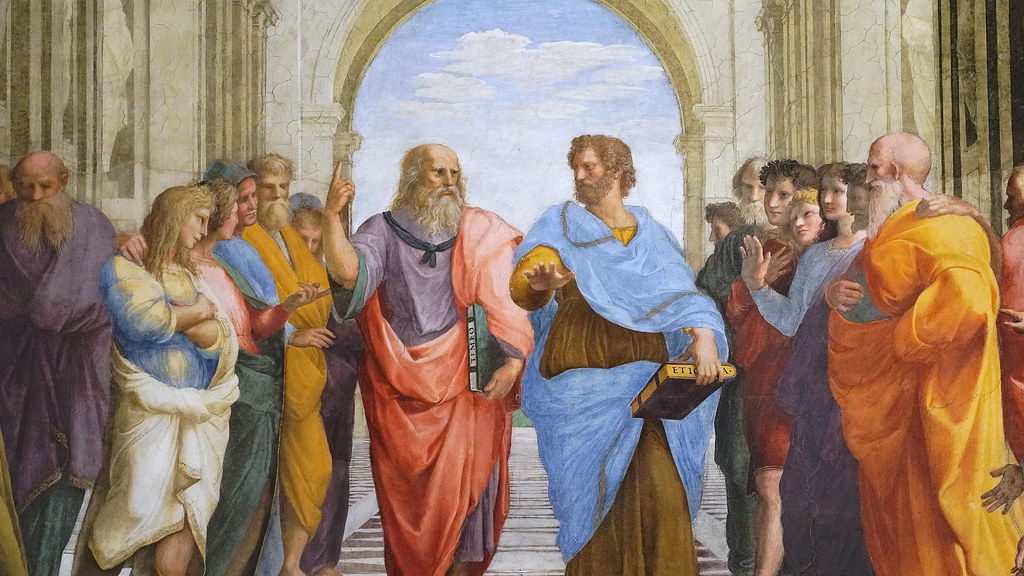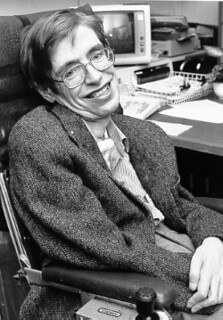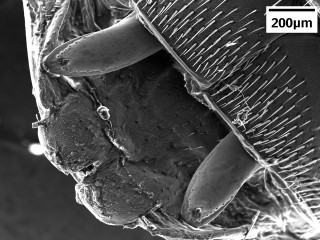Does God Exist?
Scientific and philosophical arguments supporting monotheism.
II. The Teleological Argument

The cosmological argument points to an intelligent and all-powerful, timeless, uncaused First Cause who has brought the universe and all of life into existence. This then provides the basis for the ability of this First Cause to perform powerful displays of might, wisdom and purpose and it opens the door for what we would describe as “miracles” or actions that temporarily suspend the natural laws. Those who do not believe (Atheists) in an active First Cause (God), the universe can be likened to a closed box with no God; only the laws of nature are ultimately in control inside of the box. The position of theism would affirm that the universe is an open box. God created the box and He can reach into it and intervene in the natural world in whatever way that is consistent with His nature and purposes. Miracles are then not only possible but they are actual. The greatest display of this miraculous power is the creation of the universe out of nothing. It is to this end that the Cosmological argument directs us.
The second argument that is used to defend the existence of God is the Teleological argument. The Greek word “telos” means “design” and the argument is based on the design of the universe as proof of the existence of a designer.
The argument is stated like this:
1. Every design has a designer.
2. The universe has complexity of design.
3. Therefore, the universe has a designer.
It is interesting to see how often the atheistic and evolution based scientific community refers to the “design” of the universe but does not recognize this basic premise that a design needs a “designer”.

“We are each free to believe what we want and it is my view that the simplest explanation is there is no God. No one created the universe and no one directs our fate. This leads me to a profound realization. There is probably no heaven and no after life either. We have this one life to appreciate the grand design of the universe and for that I am extremely grateful”.7
-Stephen Hawking – renowned atheist cosmologist
Mr. Hawking is certainly correct that we are free to believe what we want and this right we absolutely stand for. However, he cannot help but refer to the universe and life itself as the “grand design” and yet he does not take the next step and look to the “designer” and appreciate and thank the One who stands behind the design. The intelligent and ordered universe demonstrates the qualities of intelligent design.
Therefore, there must be an intelligent designer who designed the universe. This same description of the universe as “design” is used again and again by the scientific community and yet moving on to discuss the “designer” is forbidden territory.
When we examine the complex structure of the world from the atomic level to the level of the galaxies, the precision and wonders of these functioning systems points to design. The options that are available to account for the design of the universe is that either the random processes of evolution produced these complex systems or an intelligent and purposeful designer did.
Is the Universe as We understand it the Product of Evolution or is it the Product of a Designer?

Charles Darwin (1809-1882) known as the father of the theory of evolution and the author of On The Origin of Species by Means of Natural Selection believed that natural selection accounted for the evolution process and that all of life has progressed from simple cell structures to the complex forms of life present in the world today. He believed that simple cells existed and based on this non-complex simplicity, evolution to higher life forms could take place.
But since Darwin’s time we have grown to understand that the simple cell structures proposed by Darwin do not exist. Instead, we know that the very simplest of cell structures are comprised of (20) amino acids which are assembled into complex proteins. There are thousands (over 30,000) different types of these proteins which are comprised out of these same (20) amino acids. This could be compared to the thousands of words that we can develop from the (26) letters of the English alphabet. If the letters are not correctly assembled we will not have words that can be understood. In the same way, if the amino acids are not properly sequenced they will not form into functioning proteins. The chance of the amino acids coming together and forming into proteins is mathematically 1 in 10 (65). There is not enough time in the alleged history of the universe (13 billion years) to form one single simple protein.
The next level of atomic structure is the cell. The simplest amoeba cell consists of approximately 2,000 proteins. The chance of these cells randomly developing is 1 in 10 (40,000). Statisticians tell us that when the odds of something happening is 1 in 10 (50), the chance of this actually taking place is zero percent. The chance of these amoeba cells being randomly formed is totally impossible.A sophisticated component used by single celled bacteria for movement is the bacterial flagellum. Bacteria that possess this appendage are able to move rapidly and change directions powered by a small tail (flagellum) that spins at a rate of 200-1,000 RPM. Scientists are able to examine these bacteria under a very powerful magnifying microscope and have been able to analyze the assembly and construction of these bacteria. They discovered that the flagellum consists of (40) individual parts. The parts are constructed in such a manner that the flagellum cannot function unless all of the parts are present and working together as a unit.
This discovery flies in the face of the materialistic explanation of evolutionary natural selection. Natural selection states that small changes occur over time. In the case of the flagellum, in order to function, all (40) pieces must appear at the same time or the flagellum would be inoperable. And yet these bacteria do exist and natural selection cannot account for their existence, complexity and design. SEE NOTE #2.
What about DNA?

Another piece of evidence at the molecular level that points to design is the DNA molecule. DNA is a molecule that encodes the genetic structure that is used in the development and the functionality of all living organisms. DNA is a highly ordered and complex molecule. It contains more information and data than the largest of all human libraries. The amino acids mentioned above are brought together in response to the information and direction of the DNA molecules that exist with the acids and proteins. The DNA molecule literally provides the plans and directions that supervises the entire assembly of this process. The proteins cannot form without the extremely complex and ordered information provided by the DNA.The DNA has very specific information that directs the production and assembly of the organic structure of matter and this process is specific to each area of the organic matter that the DNA directs. This information and language can only belong to the arena of intelligence and it points to an intelligent design process. The “simple cell” structure that Darwin based his evolutionary theory on does not exist.
Instead, these cellular level systems are the result of a directed and complicated process that is based on an information driven set of blueprints prepared by an intelligence source.The high complexity and the informational nature of the systems of nature points to design. For instance, the intricacies of plant, insect and animal life, the human body and its circulation systems, the eye, brain and respiratory functions all appear to be highly designed. And this listing could go on to mention thousands of cases. Take for example the bombardier beetle which has a defense mechanism of spraying gases that ignite and explode when they come into contact with a predator. This defensive action is accomplished with two chemicals (hydrogen peroxide and hydroquinone).If these two chemicals are mixed together they will cause an explosion. The bombardier beetle carries these two chemicals inside a storage chamber and yet there is no explosion.
How? The beetle has an inhibitor that prevents the two chemicals from exploding. This inhibitor is contained in this storage chamber with the two reactionary chemicals and neutralizes them. In another storage chamber an anti-inhibitor is located and when the beetle wants to defend itself by spraying at an enemy, the anti-inhibitor is moved from its storage compartment through a tube and united with the chemicals and neutralizes the inhibitor so that the two reactionary chemicals can now combine and explode as they are sprayed. How could this beetle have slowly evolved? How do you have two chemicals without the inhibitor? The beetle needed to be designed perfectly from the very beginning with both the inhibitor and the anti-inhibitor and with the separate chamber with the anti-inhibitor added at just the right time.

A communication system is also needed so that the anti-inhibitor is ejected at the right moment in time when the beetle chooses to spray this deadly mixture of gases. Biologist Michael Behe stated – “Both the bombardier beetle’s defensive apparatus and the vertebrate eye contain so many molecular components (on the order of tens of thousands of different types of molecules) that listing and speculating on the mutations that might have produced them is currently impossible”.8The idea that everything has come from nothing is a bit hard to swallow, even for many scientists. Reflecting Darwin’s own concerns, leading evolutionists such as Ernst Mayr have concluded that the idea that systems such as the eye, feather, or instinct could evolve and be improved by random mutations represents “a considerable strain on one’s credulity”. Darwin himself confessed, “I remember well when the thought of the eye made me feel cold all over…[Now] The sight of a feather in a peacocks tail, when I gaze at it, makes me sick”. Dr. (Michael) Denton also refers to the idea that evolution could occur by purely random processes – and yet produce the complexity of living organisms about us – as “simply and affront to reason”. 9
What Evidence is there for Design in the Cosmos?
This same type of complexity of process is found in the natural laws that gove our universe. When scientists examine the universe and the conditions necessary for its existence, the incredible precision and nature of many finely tuned constants points to design. These environmental conditions called anthropic constants are physical laws and conditions that are very finely tuned and are absolutely required in order for the universe and life to exist. They point to a complexity that cannot be accounted for by evolutionary processes or mere chance. The Discover Magazine stated regarding this complexity, “The universe is unlikely. Very unlikely. Deeply, shockingly unlikely”. 10.

There are numerous (over 300) conditions and prerequisites that are necessary in order for life to exist on the earth. Here are (10) of the well-known ones.
1. Water – must have liquid H2O.
2. Exact distance from the Sun.
3. Correct type of soil conditions of the earth.
4. Earth’s magnetic fields.
5. Nitrogen/Oxygen based atmosphere.
6. The correct sized moon.
7. A Sun of the correct size and distance from the earth.
8. The Earth’s atmospheric transparency.
9. The Earth’s Carbon Dioxide levels.
10. The Earth’s rotation rate and axil tilt.
These are only (10) constants with over (300) that could be listed here. Astrophysicist Hugh Ross has calculated that the probability of just (122) of these constants existing for any one planet in the universe by chance is 1 in 10 (138). 11
As mentioned earlier, statisticians have calculated that when the odds of something happening reaches 1 in 10 (50) there is effectively a zero percent chance of this to take place. Based on the statistical probability of these universal life constants, the earth should not exist. If natural causes are the only explanation available to account for these constants there would be essentially a zero percent chance of the earth’s existence. The only way to explain the earth and its very existence is to look beyond a natural explanation to a supernatural one. We cannot give time enough time or chance enough chances to account for the complexities that we observe in our universe.
Astronomer George Greenstein stated – “As we survey all the evidence, the thought insistently arises that some supernatural agency – or rather, Agency – must be involved. Is it possible that suddenly, without intending to, we have stumbled upon scientific proof of the existence of a Supreme Being? Was it God who stepped in and so providentially crafted the cosmos for our benefit?” 12
William Paley’s Watchmaker Argument
 |
The argument from design was probably best known from the teaching of William Paley (1743-1805). Paley was a professor of philosophy and theology at Cambridge University. Paley argued for the existence of God based on the ordered aspect of nature. His most famous illustration is the watchmaker example.
He created the following scenario. Suppose a person finds two objects in the middle of a field. The first find is a rock. This discovery causes no unexpected response. A rock is a rock and it lies totally within the normal scope of objects found within nature. When you find rocks it raises no questions as to how or what caused the rock to exist and to be placed in the area where you find it. It is natural and considered normal to find rocks in fields. The second find is a watch. If this person had never seen an object like this before what would he conclude regarding this discovery? He would see the numbers (information) and the gears and dial arms (mechanisms) and would soon learn that the movement of the arms corresponded with the time of day and that this indication of time was consistent day after day.
The conclusion would be that the rock might naturally arise, however the second object (the watch) indicated that there must be an intelligent designer who designed and built the watch for an intended purpose. When the watch is examined, the parts and mechanisms reveal that it has been formed and put together for the purpose of telling time. The watch demands a watchmaker.
This is essentially the Teleological argument. The design of the universe and all of life in general has information, complexity and purpose and this design indicates a designer. The evidence from microbiology and cosmology based on the discoveries of modern science and observation has elevated this type of argument as formulated by William Paley as a formidable evidence for the reality of a designed universe. If one looks at rocks, hills, mountains or rivers…. we see the normal reality of nature. However, if we find ancient artifacts such as cave carvings, pottery, statues, buildings, writings or larger realities such as the Egyptian Pyramids or the American Mount Rushmore, we automatically ascribe design. Why? To answer this we need to examine two areas of evidence and answer the following two questions.
First, could this object be the result of chance or accidence? Second, is it possible that this object or item is similar to other known existing objects or items? For example, if a person finds an old stop sign. We must ask the question – Is this something that the wind, rain or the work of little squirrels has caused to come to be? Or because it has produced information is this something that requires intelligence? When we find other known items with information do we know that these items are produced by an intelligent source? The answer is that we naturally recognize that it is very improbable that information or functioning mechanisms have occurred by accident or the process of chance. We ascribe designing intelligence to information and to mechanisms. Neither the stop sign nor the watch are things that we find naturally in nature. We instinctively attribute this as a design built by a designer.
Since the time of William Paley there have been significant developments in our understanding of the intricacy of biological structures, the fine tuning of the universe and life based constants and the theories of probability and mathematics. These observational based evidences point to the design and a designer for these complex systems. This does not mean that we should be opposed to natural explanations or causes found in nature. There are clearly both natural and intelligent causes for the things that we observe in nature. But when natural explanations fail and the observational evidence points to an intelligent design we need to be willing to accept the reality of a designer. The more scientists discover of the various systems found in our universe the more apparent it is that these systems are not the result of natural causes based in time and chance, but rather they appear to be designed because they are designed. As scientist and physicist Paul Davies stated “the impression of design is overwhelming”. 13
